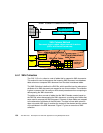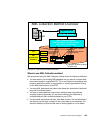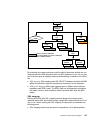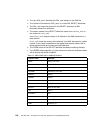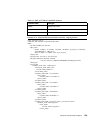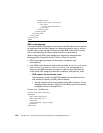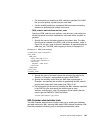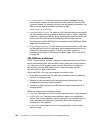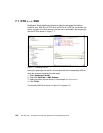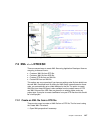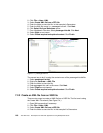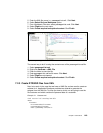142 The XML Files: Development of XML/XSL Applications Using WebSphere Studio
1. A command line tool. The administration command is dxxadm and all the
administration functions can be executed with this command from the DB2
command window. For example, you can enter the following command in the
DB2 command window to enable a database for XML:
dxxadm enable_db databasename
2. An administration wizard. The wizard is a GUI tool that helps you accomplish
the administration such as, enabling a database, table, or column, enabling a
collection, or editing the DAD file. All the administration functions that you can
perform with the wizard are also available with the command line tool.
The functions to edit the DAD file are now available in the WebSphere Studio
Application Developer tool.
3.
Programming interfaces. The XML Extender provides a number of UDFs that
can be used within the SQL statements, and stored procedures that can be
invoked from application programs. A list of these UDFs and stored
procedures is provided in “Administrative support tables, UDTs, and UDFs”
on page 128.
XML MQSeries enablement
In XML Column method, and XML Collection, we discussed the two methods of
storing and accessing XML data: the XML column method for storing/retrieving
as-is documents in the database tables, and the XML collection method for
decomposing incoming XML document into tables and composing XML
document from the data in DB2 tables.
With the MQ XML UDFs you can complete the following tasks:
Query XML documents with the XML column method, and then publish the
results to a message queue.
Retrieve an XML document from a message queue, decompose it into
untagged data and store the data in tables.
Compose an XML document from DB2 data and send the document to a
message queue.
MQSeries supports three messaging models:
datagrams: Messages are sent to a single destination with no reply expected.
publish/subscribe: Publishers and subscribers register with a publication
service. One or more publishers send a message to the publication service
which distributes the message to subscribers who want to receive the
message from the publisher.
request/reply: Messages are sent to a single destination and the sender
expects a reply.



